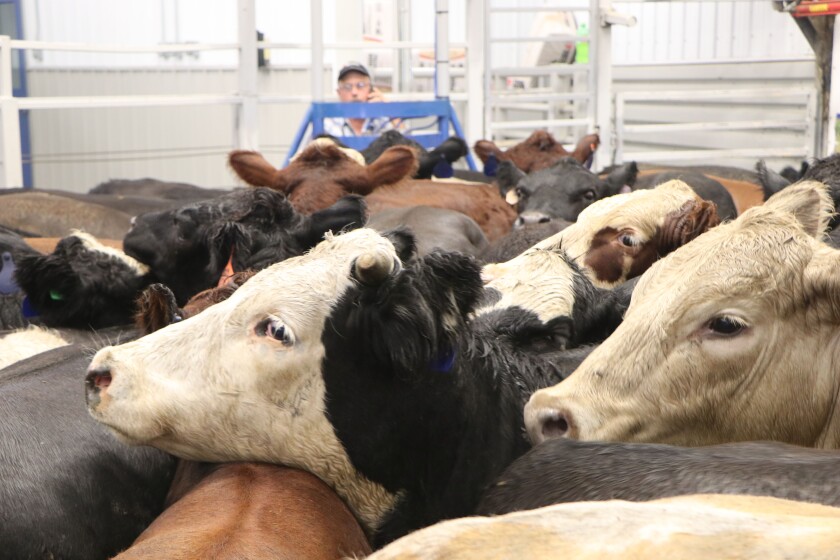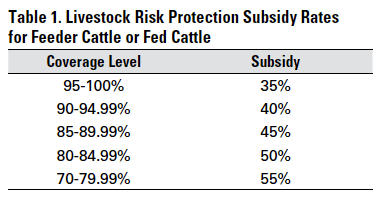Securing Success: Bagley Risk Management Solutions
Securing Success: Bagley Risk Management Solutions
Blog Article
Key Elements to Take Into Consideration When Picking Livestock Danger Security (LRP) Insurance Coverage
When evaluating choices for Animals Danger Defense (LRP) insurance coverage, numerous essential factors call for careful consideration to make certain effective danger monitoring in the agricultural market. Picking the right protection choices customized to your particular animals procedure is critical, as is comprehending exactly how premium costs correlate with the degree of defense offered.
Coverage Options
When taking into consideration Livestock Risk Security (LRP) insurance policy, it is necessary to comprehend the different insurance coverage alternatives available to mitigate risks in the agricultural industry. Livestock Danger Defense (LRP) insurance policy supplies various coverage alternatives customized to fulfill the varied demands of livestock producers. Bagley Risk Management. Among the main insurance coverage alternatives is rate insurance coverage, which secures versus a decrease in market rates. Manufacturers can select the protection degree that aligns with their price threat monitoring objectives, enabling them to secure their operations against potential economic losses.
Another important coverage alternative is the recommendation period, which establishes the size of time the coverage is in result. Manufacturers can choose the recommendation period that best fits their production cycle and market problems. Additionally, insurance coverage levels and prices vary based upon the type of animals being insured, giving manufacturers the flexibility to personalize their insurance coverage intends according to their particular needs.
Comprehending the various protection alternatives offered under Animals Danger Protection (LRP) insurance coverage is vital for producers to make enlightened decisions that properly safeguard their animals operations from market uncertainties.
Costs Costs

Animals Danger Security (LRP) insurance provides essential insurance coverage alternatives tailored to mitigate risks in the farming sector, with a substantial facet to take into consideration being the estimation and framework of premium prices. These include the kind and number of animals being insured, the insurance coverage level chosen, the existing market costs, historical cost data, and the size of the protection duration.
Premium expenses for LRP insurance policy are generally computed based on actuarial information and run the risk of assessment designs. Insurance providers analyze historic data on animals prices and manufacturing costs to figure out an appropriate costs that reflects the degree of threat entailed. It is important for animals producers to carefully assess premium prices and coverage choices to ensure they are adequately secured versus potential monetary losses as a result of unfavorable market problems or unpredicted events. By understanding exactly how exceptional costs are determined and structured, manufacturers can make enlightened decisions when selecting the ideal LRP insurance coverage plan for their operation.
Qualified Animals
The resolution of qualified livestock for Animals Danger Defense (LRP) insurance policy coverage entails cautious consideration of details standards and attributes. Livestock types that are generally qualified for LRP insurance coverage include feeder livestock, fed swine, cattle, and lambs.
Feeder livestock, for example, are frequently qualified for LRP protection if they drop within specified weight varieties. Lambs are an additional category of animals that can be taken into consideration for LRP insurance coverage, with variables such as weight and age playing an essential function in establishing their qualification.
Before choosing LRP insurance policy for livestock, producers must carefully evaluate the eligibility standards described by the insurance coverage service provider to ensure their pets fulfill the essential requirements for coverage.
Policy Adaptability
Plan flexibility in Animals Risk Defense (LRP) insurance coverage permits producers to customize coverage to match their particular demands useful link and run the risk of monitoring techniques. This adaptability equips animals producers to personalize their insurance policy policies based on variables such as the type of animals they possess, market conditions, and specific risk tolerance degrees. By providing customizable alternatives, LRP insurance policy enables producers to successfully manage their risk direct exposure while securing their animals operations against unpredicted market volatility.
Claims Process
Upon experiencing a loss or damages, manufacturers can initiate the claims procedure for their Livestock Threat Defense (LRP) insurance by immediately calling their insurance policy supplier. It is critical for producers to report the loss asap to speed up the insurance claims process. When getting to out to the insurance policy copyright, producers will need to provide thorough details about the incident, including the date, nature of the loss, and any relevant documentation such as veterinary records or market value.

After the analysis is full, the insurance coverage copyright will choose relating to the claim and interact the outcome to the producer. If the case is approved, the producer will obtain compensation according to the regards to their click here now Animals Risk Security (LRP) insurance plan. Bagley Risk Management. It is important for manufacturers to be acquainted with the cases process to make sure a smooth experience in case of a loss

Conclusion
Finally, click for info when selecting Livestock Threat Defense (LRP) insurance, it is vital to consider coverage choices, premium expenses, qualified animals, policy versatility, and the claims process. These vital variables will certainly help make sure that farmers and herdsmans are sufficiently safeguarded against possible dangers and losses associated with their livestock procedures. Making a notified decision based upon these considerations can inevitably cause better economic protection and assurance for livestock manufacturers.
Livestock Threat Security (LRP) insurance supplies different coverage choices tailored to satisfy the varied needs of animals manufacturers.The determination of eligible animals for Livestock Risk Defense (LRP) insurance protection includes mindful factor to consider of specific standards and attributes.Policy versatility in Animals Danger Defense (LRP) insurance coverage allows producers to customize protection to match their particular demands and risk administration strategies.Upon experiencing a loss or damage, manufacturers can launch the claims process for their Animals Risk Security (LRP) insurance policy by quickly calling their insurance policy copyright.In conclusion, when choosing Animals Risk Protection (LRP) insurance coverage, it is crucial to consider protection alternatives, premium prices, eligible livestock, plan adaptability, and the claims procedure.
Report this page